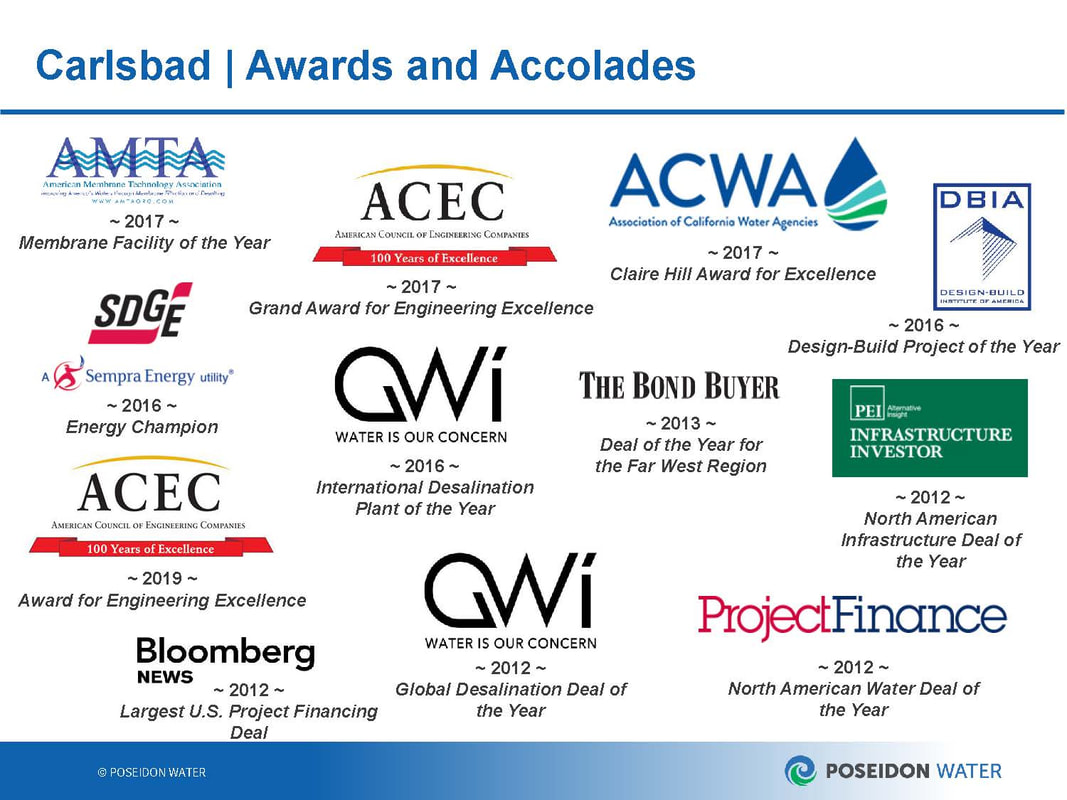|
San Diego Union Tribune Carlsbad, CA (December 14, 2015) - In addition to covering life sciences for The San Diego Union-Tribune, Bradley J. Fikes has written about drought and other water issues. In today’s Back Story, he talks about his SD In Depth story about the significance of the new Poseidon desalination plant in Carlsbad. Question: There have been lots of stories written over the years about the Poseidon undertaking. What prompted today’s package?
Answer: It’s a gigantic milestone for ocean desalination in California. About a decade and a half of thought, planning, debate, opposition and a long series of crucial legal and administrative decisions — plus about $1 billion in financing — made the project a reality. Question: What did you learn from reporting and writing this story? Were there any surprises? Answer: I was surprised at just how long and convoluted the approval and legal process was. There were immensely complicated issues, such as how to deal with environmental damage from the desalination plant. But perhaps even more surprising was how complicated the political and financial process became. Poseidon had to get a firm commitment from customers whom bond buyers could trust. That turned out to be the San Diego County Water Authority, which alone had the financial rating and legal power to guarantee it would pay for the water. Getting to that commitment wended its way through attempts by the city of Carlsbad and then a coalition of North County cities and water agencies to purchase the water. Question: You have tracked the Poseidon project since its inception. Were there times when you thought it would die? Answer: Yes, several times. The price of the project kept rising, from $270 million to finally about $1 billion. There were serious doubts about Poseidon’s capabilities after it ran into trouble with another desalination project in Tampa Bay, Fla. Environmentalists raised strong objections and filed lawsuits. Environmental lawyer Marco Gonzalez and the Surfrider Foundation were formidable and passionate foes. Question: Having visited the desalination plant, what to you is the most interesting aspect there? Answer: The extensive filtering and chemical treatment process, which removes and precipitates solids so the water is ready for purification through reverse osmosis. There’s more stuff in seawater than I ever guessed, and taking it out is complicated. The reverse osmosis filters are also fascinating. Poseidon’s senior vice president in California, Peter MacLaggan, explained in detail to me how the filters work, getting down to the chemical properties of their different layers and the paths ionized molecules would take. It’s an engineer’s dream. Question: Do you think the use of desalination will grow in our county, or will water recycling (turning sewage into drinking water) take the lead? Answer: My just-refurbished crystal ball says water recycling will take the lead, because it is just as safe as desalination but less expensive. Some of the technology is similar, specifically the reverse osmosis filtration part of it. Two decades ago, I drank purified sewage water produced by a recycling plant. The technology seemed to be nearing use by the city of San Diego. But public squeamishness scared away politicians, who could have led the public to accept it. Orange County’s leadership took a more enlightened approach and was able to persuade its citizens to accept the technology. Question: Are there similarities in covering water issues and the biotech industry? Answer: In San Diego, they are joined at the hip. The region’s biotech industry got organized for the first time around 1990, during a drought. For a time, it appeared that the county’s water supply would be cut in half. This would have been catastrophic for biotech companies and research institutes. So the executives emerged from their offices and the scientists from their labs to urge that biotech companies be guaranteed quality water, which is essential to their operations. I remember seeing them making their case before the San Diego City Council, which heeded their plea. Question: What do you enjoy most about being a journalist, and what do you dislike the most? Answer: I like most learning about interesting subjects, such as biotech. I get to read the scientific publications and talk with the authors. It’s like a never-ending university. What I dislike most is having to interrupt my learning to actually write the stories. It is fun to daydream about the science, but having to write it down and explain it in an accessible way is hard work. I identify with the quip attributed to Dorothy Parker: “I hate writing, I love having written.”
0 Comments
Your comment will be posted after it is approved.
Leave a Reply. |
What's the latest?
|
All Rights Reserved. Contact | Login.


 RSS Feed
RSS Feed